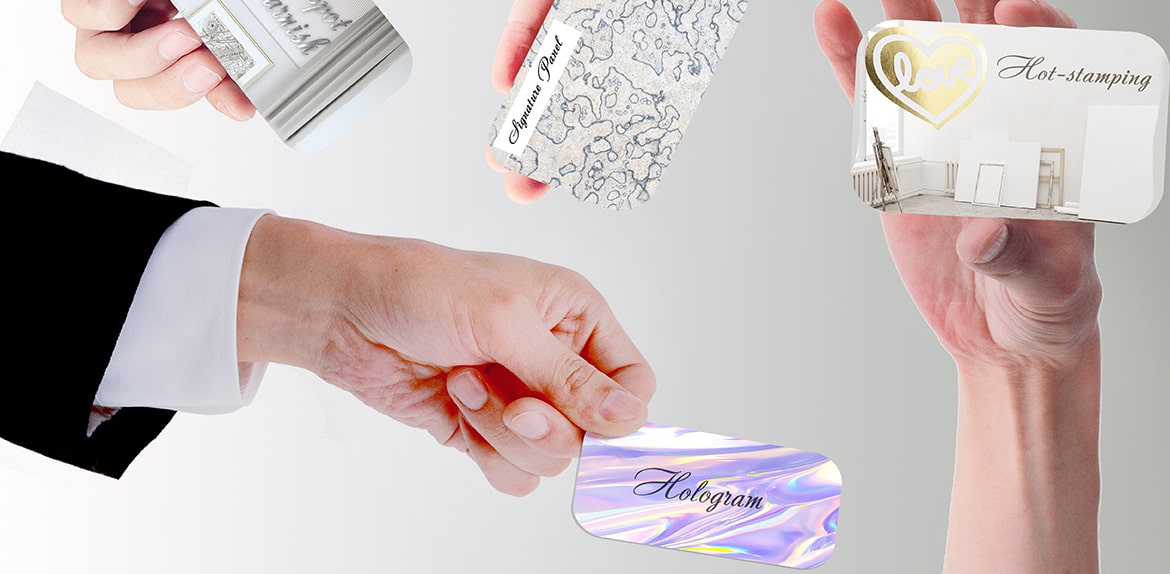Finishing
Selective UV varnish
Selective UV varnish is a great opportunity to create the necessary accent on the selected design element, making it either glossy or matte.
With this method of finishing with UV varnish, a slight gloss or mat effect is created in some places. And only with the right design will it give a spectacular and exclusive look to your map. The principle of such a map is contrast, highlight the elements on a matte map with a glossy varnish, or vice versa.
Signature strip
Many plastic cards are equipped with a personalization element such as a signature strip. It is a section of a plastic card covered with a special composition, on which the owner must leave his autograph (most often), or make another mark with a ballpoint pen, as required by the requirements.
The requirements for the location of the signature strip are similar to the general requirements for personalization: the field should not overlap with other identification elements.
A special feature of the signature strip is the fact that you can mark on it only once. When you try to delete the data and overlay the existing label with another, the coating loses its original structure.
There are several ways to apply a signature strip:
Silk-screen printing. The most common way for large print runs. The paint is applied through a stencil. You can write on such a strip with any pen.
Embossing. With the help of a cliche, a section on the map is embossed with a special or matte foil
Sublimation printing. Suitable for small runs and samples, formed by paint transferred from film to the surface of the laminate.
Embossing
Another way to make the card special is foil stamping.
Embossed plastic cards have a much more elegant and presentable appearance, in comparison with cards made in the usual way. Therefore, such cards and embossed business cards are ordered by those who want to emphasize their premium status or make a positive impression once again on their potential partners or customers.
But this type of cards has a significant drawback, since for their production it is necessary to make a cliché that slightly increases their cost. A cliché is a special form, with a mirror image of the required element, which must be transferred to the card, and is made from magnesium.
It is profitable for small runs to replace the stamping with sublimation printing with foil, although the quality is slightly inferior to the stamping. This method is not as durable to use, but saves on cliché costs.
For embossing, they mainly use silver and gold foil, since the association is immediately for high status, prestige and success, but there are other options. Holographic or foil of different colors are always available to order for the implementation of the most daring design projects!
Holograms
A hologram on plastic cards is a three-dimensional image (often a sticker, but a special holographic laminate is also available), which is created using photographic projection. It gives a real depth of space and does not require additional devices to view. A hologram on a plastic card is a proven, reliable and effective protection against counterfeiting. And also the card looks very presentable, exclusive and unique. Card validation, anti-counterfeiting, brand promotion and status are the main functions of the hologram.
There are several options for the technology of applying a hologram to a card: applying a hologram over a laminate to an already finished card, as well as under a laminate, during the manufacturing process. The second option guarantees its complete safety and excludes the possibility of removing the hologram, while maintaining the holographic effect. At the first, it is possible to remove it from the card, but re-sticking it to another is excluded, since the hologram is self-destructive.
